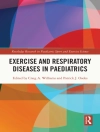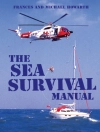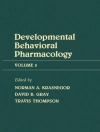The definitive guide to thoracic spine pathologies and state-of-the-art surgical approaches
Surgery of the Thoracic Spine: Principles and Techniques by renowned spine surgeons Ali Baaj, Kumar Kakarla, and Han Jo Kim fills a gap in the literature, with content focused solely on pathologies and surgical techniques of the thoracic spine and vertebral column. Starting with a thoughtful discussion on the uniqueness of the thoracic region as it relates to pulmonary function, the richly illustrated textbook covers a full spectrum of topics from biomechanics and anesthetic considerations to neuromonitoring and neuronavigation.
With contributions from a cadre of distinguished experts, the book encompasses pathophysiology, surgical techniques, and reconstructive strategies for common degenerative, congenital, oncologic, and traumatic diseases of the thoracic spine. Dedicated chapters cover treatment options for different types of scoliosis, Scheuermann kyphosis, proximal junctional deformity, and posttraumatic deformity.
Key Features
- Treatment of common degenerative conditions including stenosis and disc herniations
- Management of less common inflammatory and infectious spinal diseases such as spondylarthropathies, osteomyelitis, discitis, and fungal and tubercular infections
- Oncologic topics including primary, intradural extramedullary, and intramedullary spinal cord tumors and thoracic spine metastases
- Surgical treatment of pediatric and adult deformities including congenital, idiopathic, and degenerative scoliosis
- Classification of thoracic spinal fractures, discussion of complete and incomplete thoracic spinal cord injuries, posterior and ventral treatment of thoracic spine fractures, and osteoporotic compression fractures
This is an invaluable evaluation and management tool for neurosurgical and orthopaedic residents and practicing spine surg
İçerik tablosu
<p><strong>Part I Introduction</strong><br>1 Pulmonary and Chest Wall Physiology<br>2 Biomechanics of the Thoracic Spinal Column<br>3 Anesthetic Considerations for Surgery of the Thoracic Spine<br>4 Clinical Presentation of Thoracic Spinal Compression<br>5 Nonoperative Neurological Diseases of the Thoracic Spinal Cord</p><p><strong>Part II Deformity</strong><br>6 Surgical Management of Congenital Scoliosis<br>7 Neuromuscular Scoliosis<br>8 Adolescent Idiopathic Scoliosis<br>9 Scheuermann’s Kyphosis<br>10 Proximal Junctional Deformity<br>11 Posttraumatic Deformity</p><p><strong>Part III Degenerative Disease</strong><br>12 Thoracic Spinal Stenosis<br>13 Paracentral Disc Herniations of the Thoracic Spine<br>14 Midline Disc Herniations of the Thoracic Spine<br>15 Spondyloarthropathies.</p><p><strong>Part IV Infection</strong><br>16 Epidural and Soft-Tissue Infections<br>17 Thoracic Osteomyelitis and Discitis<br>18 Fungal and Tubercular Infections of the Thoracic Spine</p><p><strong>Part V Tumor and Vascular</strong><br>19 Primary Tumors of the Thoracic Spinal Column<br>20 Metastatic Disease of the Thoracic Spinal Column<br>21 Intradural Extramedullary Tumors<br>22 Intramedullary Spinal Cord Tumors<br>23 Surgical Management of Thoracic Spinal Arteriovenous Malformations</p><p><strong>Part VI Trauma</strong><br>24 Classifications of Thoracic Spinal Fractures<br>25 Complete and Incomplete Thoracic Spinal Cord Injuries<br>26 Posterior Approaches for Thoracic Spine Fractures<br>27 Ventral Approaches to the Thoracic Spine for Trauma<br>28 Osteoporotic Compression Fractures</p><p><strong>Part VII Further Topics</strong><br>29 Idiopathic Spinal Cord Herniation<br>30 Intraoperative Neuromonitoring During Thoracic Spine and Spinal Cord Surgery<br>31 Neuronavigation for Complex Thoracic Spine Surgery</p>












